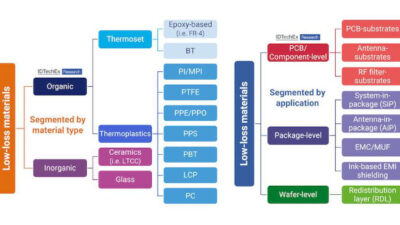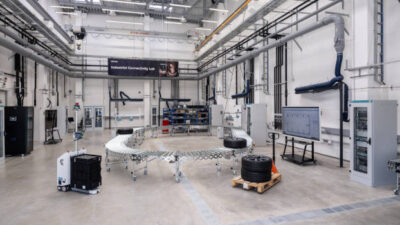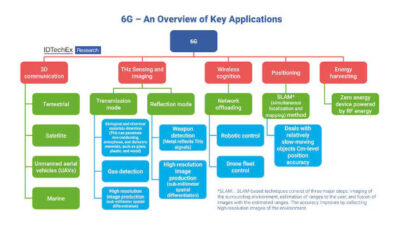Advanced simulation is the key to designing safe, stable and cost-effective 5G devices, implementations.
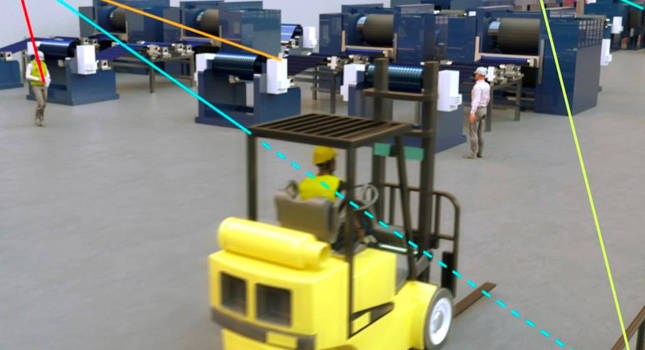
Learning Objectives
- Learn about 5G technologies, applications.
- See how simulation software helps with 5G antennas, devices, designs, digital twins and reporting requirements for radio frequency (RF) energy./li>
- Examine how to model successful 5G designs.
5G – the fifth-generation mobile network, is already offering higher speeds, higher reliability and lower latency than any cellular technology released thus far. That doesn’t mean all of the pieces are currently in place for this transformation to occur – at least, not on a consistent, widespread basis. Tools are needed to help the required design changes.
A key challenge to overcome is the design of 5G devices, specifically the creation and placement of the antennas that transmit and receive information from nearby towers. New 5G antennas must cover several widely-spaced frequency bands, not interfere with other sensors on devices and provide the safe and reliable signal reception that 5G providers have promised to the public. Manufacturers are using simulation software to find the ideal placement for antennas on devices, enabling much shorter design cycles and an enhanced end-user experience.
Dissecting 5G technologies, applications
Two broad types of 5G coverage exist. The “slower,” but more widely available, version is referred to as sub-6 GHz, which, as its name implies, operates at a frequency range below 6 GHz. Most of today’s consumer offerings are in the 2.5 GHz spectrum and provide download speeds two to three faster than 4G LTE. However, sub-6 GHz has the potential to achieve speeds 10 times or higher than what is currently available.
The second 5G technology is known as high-band or mmWave. It operates in the 24 GHz spectrum and above. As you might expect, mmWave promises massive improvements in bandwidth and download speeds. Unfortunately, higher frequencies like this are more susceptible to interference, so the range is limited compared to sub-6 GHz—where the latter is suitable for city-wide usage (depending on tower placement and other factors), mmWave might be deployed in a single neighborhood, or as part of a larger mesh-type deployment.
Both standards include support for multiple input multiple output (MIMO) communications as well as antenna arrays that use beamforming technology to increase network capacity and signal quality. 5G is often considered more secure (or easier to secure) than the alternative due to better encryption capabilities and other features that make it hard for bad actors to track and hack device connections.
There remains significant room for improvement in device antenna design, their placement and the design of associated high-speed electronics. 5G devices, namely the cell phones we use each day, as well as a host of IoT-enabled (Internet of Things) appliances, sensors, radars, lidars, cameras and industrial equipment, will soon depend on public or private 5G to function.
These devices were already quite complex and 5G makes them even more so. Most of today’s cell phones, for example, are required to detect and process Wi-Fi, GPS, Bluetooth and 4G cellular signals. And they must perform these and other tasks while constrained to form factors that shrink with each passing model year – all while handling increasing amounts of data and new safety and emissions regulations.
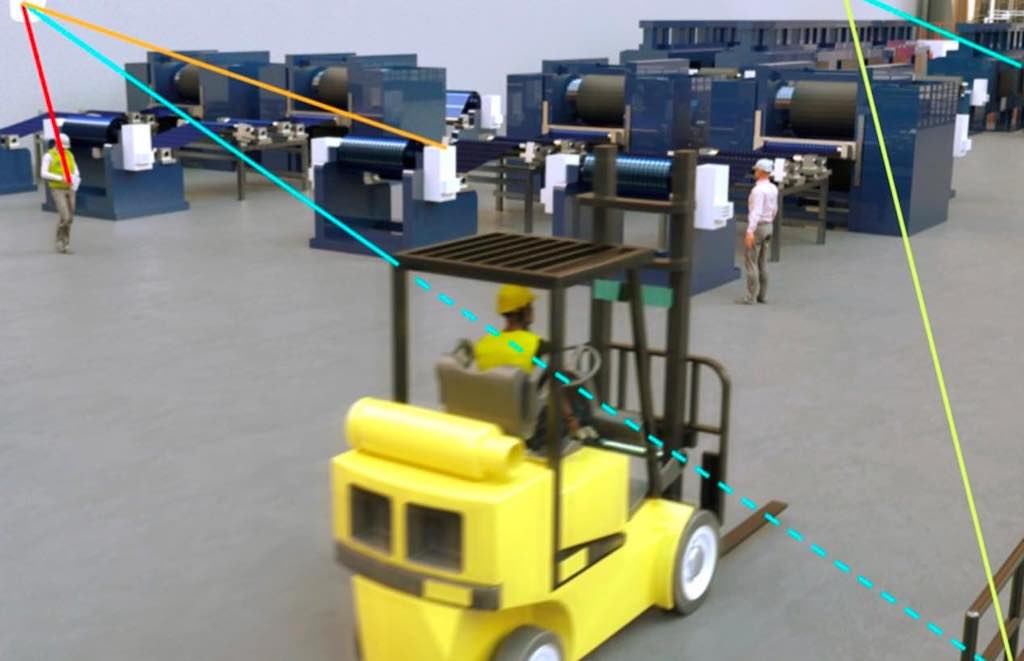
5G antennas, devices, designs, digital twins, simulation software
With 5G, cell phone manufacturers are now being asked to retain all existing functionality, including 4G capabilities, while cramming in several 5G mmWave antennas and another for Sub-6 GHz.
It’s a tall order. It’s not simply a matter of “cramming more” into a fixed space. Because of how 5G antennae function – and especially due to mmWave signals’ reluctance to pass through solid objects like metal, glass and even human fingers – all 5G devices must be redesigned to accommodate what most would consider finicky antenna placement. This is an essential consideration to obtain the best coverage and meet regulations.
A digital twin of the smartphone, a virtual representation of the complete device, is now an essential part of the design and certification process. The digital twin allows product engineers to innovate without risk and ensure all antennas and systems will work as expected and meet regulatory standards. For 5G, simulation and automated workflows in advanced simulation tools produce key performance indicators (KPIs) for each iteration of early-stage designs and give engineers high confidence the final product will perform as expected.
This virtual design is important for 5G mmWave, where testing of beam coverage and worst-case power loss density would be very time consuming and take days of testing in an anechoic chamber. Coverage metrics such as the cumulative distribution function (CDF) and regulatory metrics such as spatially averaged power density (sPD) are available in simulation software.
Cellphone and other device designers need to meet demanding requirements. Simulation software used for mobile device designs help implement the latest wireless capabilities, reduce prototyping, optimize antenna efficiency and shorten time to market for mobile phones by 35%.
In addition to the electromagnetic performance, the same digital twin can be used for structural and thermal design. This holistic multiphysics product design ensures an optimal and robust end-user experience that will meet all geo regulatory requirements.
Reporting requirements for radio frequency (RF) energy
Device designers can use software to simulate electromagnetic to optimize antenna placement. Devices using 5G do not emit ionizing radiation (the type that damages human DNA), manufacturers are required to report the amount of radio frequency (RF) energy – the specific absorption rate, or SAR – emitted by products to government agencies. Thanks to their higher frequencies and power requirements, 5G devices are no exception. New requirements for mmWave signals require manufacturers to meet maximum permissible exposure (MPE) requirements.
The good news is designers have access to capable software that can simulate these systems and guide cell phone and other wireless device manufacturers to optimal solutions and meet key performance indicators (KPIs). For instance, it’s now possible to automatically obtain KPIs such as spatially-averaged power density and spherical coverage via the cumulative distribution function (CDF) assuring manufacturers will meet the required coverage and certification standards.
Modeling success in 5G designs
Similarly, designers can use this simulation software to model any potential interference to those same RF fields. Using parametric values, antenna shape and location within the handset is easily optimized for performance, power consumption, and maximum reception. Designers can quickly build virtual prototypes to determine what materials and layout provide the greatest signal transmission, or which will best shield the user or limit interference.
Designers also can evaluate different frequency ranges and scanning angles, visualize and experiment with beam forming techniques. Multiphysics simulation capabilities allow studies of structural and thermal factors and which trade-offs may be required to accommodate the best electromagnetic performance. Each of these capabilities are designed to improve overall device performance and reduce manufacturing investment while eliminating potential malfunctions that could lead to warranty claims, product recalls and unhappy customers.
Such simulation tools are widely available, paving the way forward for more rapid and cost-effective deployment of current and future 5G technologies. Even if you’re not ready for a new smart phone, self-driving cars or remotely piloted aircraft, advanced simulation software can help with other design challenges, providing a signal that’s loud and clear.
Jonathan Oakley is director of high-tech industry enablement at Dassault Systèmes Simulia. Edited by Mark T. Hoske, content manager, Control Engineering, CFE Media and Technology, [email protected].
KEYWORDS: 5G, wireless device design, simulation software
CONSIDER THIS
Are you using the right tools to design and integrate 5G technologies into device designs?
3 fast facts about 5G
- Despite its immense promise, 5G’s mmWave frequencies are susceptible to blocking from solid objects, including the human body.
- Imagine the ability to model a cell phone’s impact on its human user and the human’s effect on signal strength and direction.
- Cell phone manufacturers have faced increasing complexity and design challenges. 5G compounds this trend.
